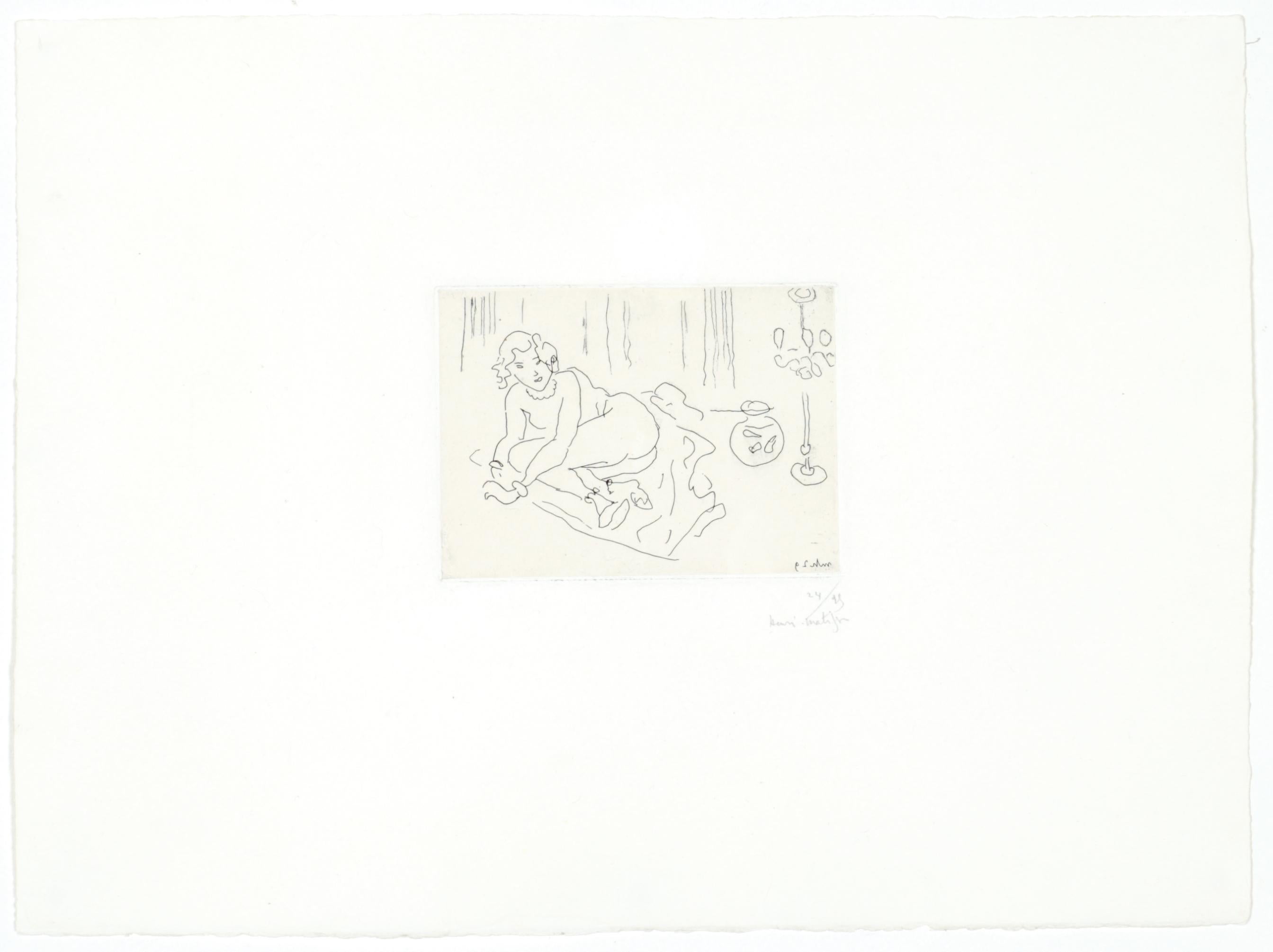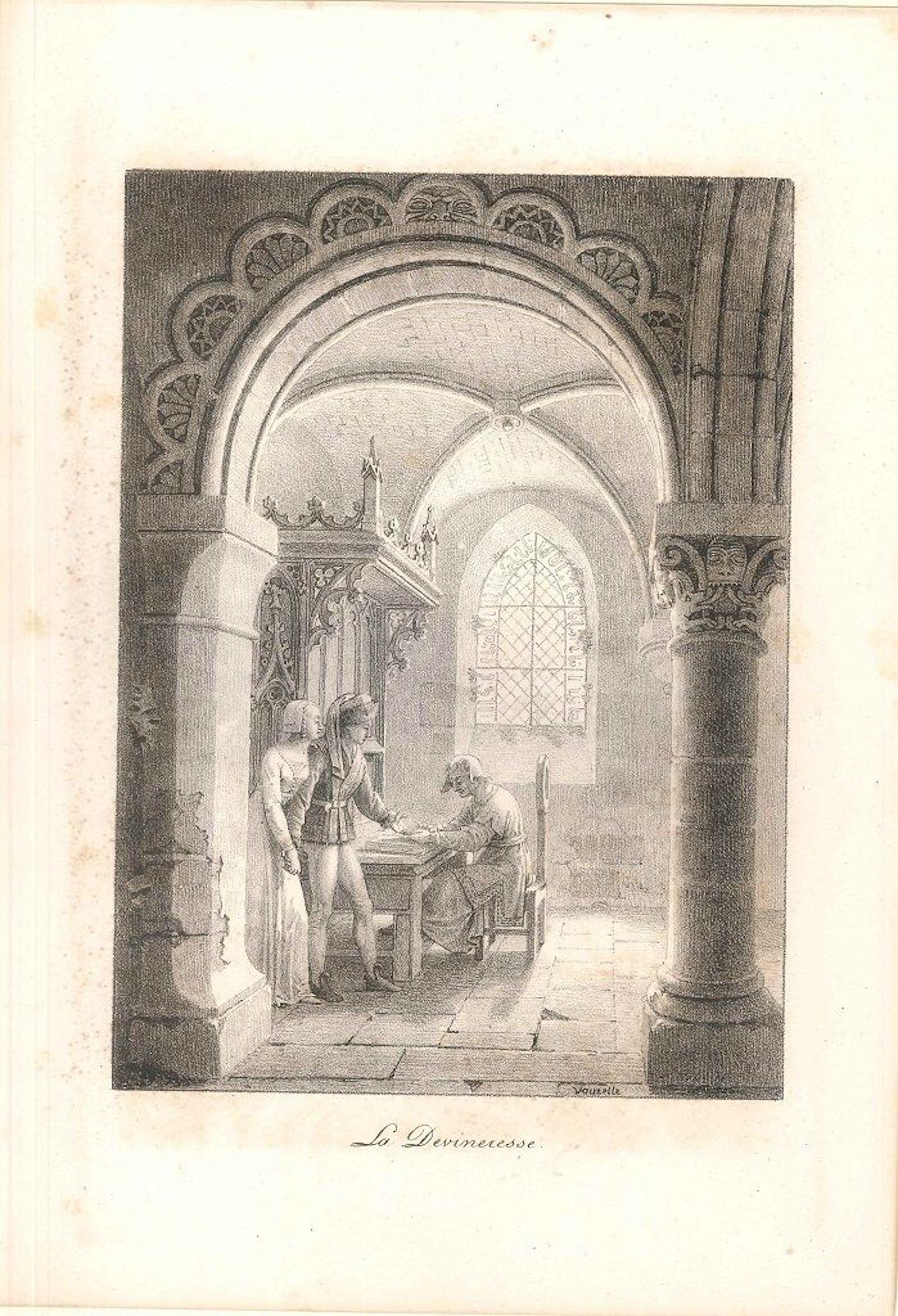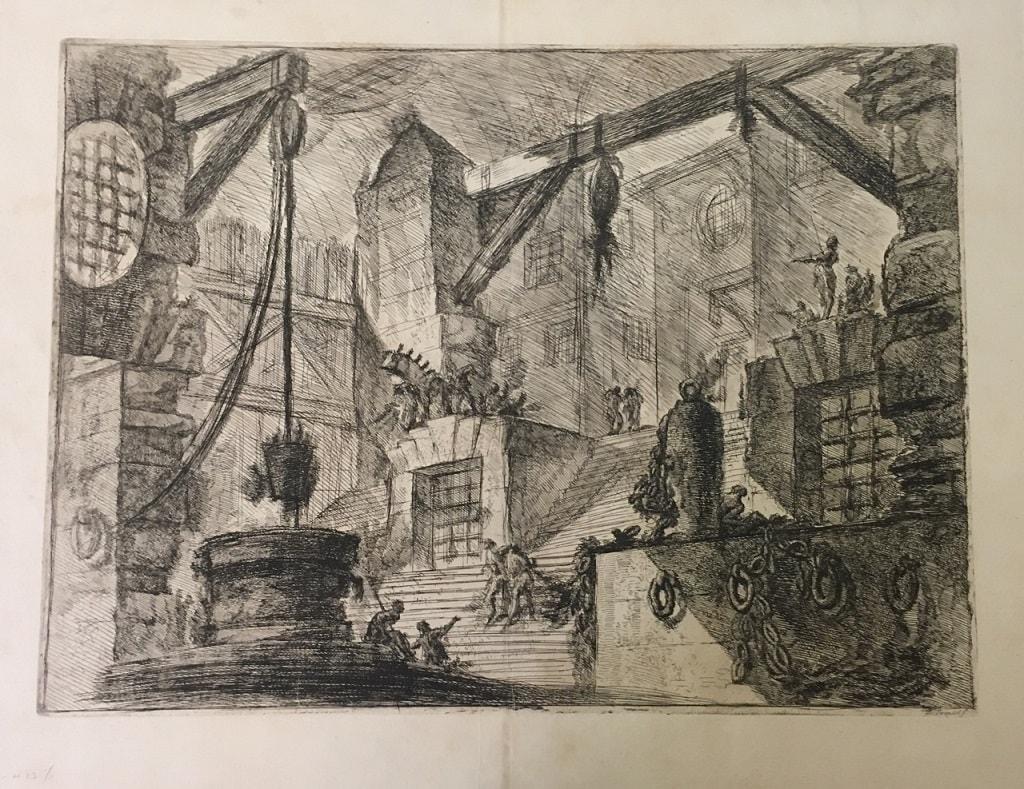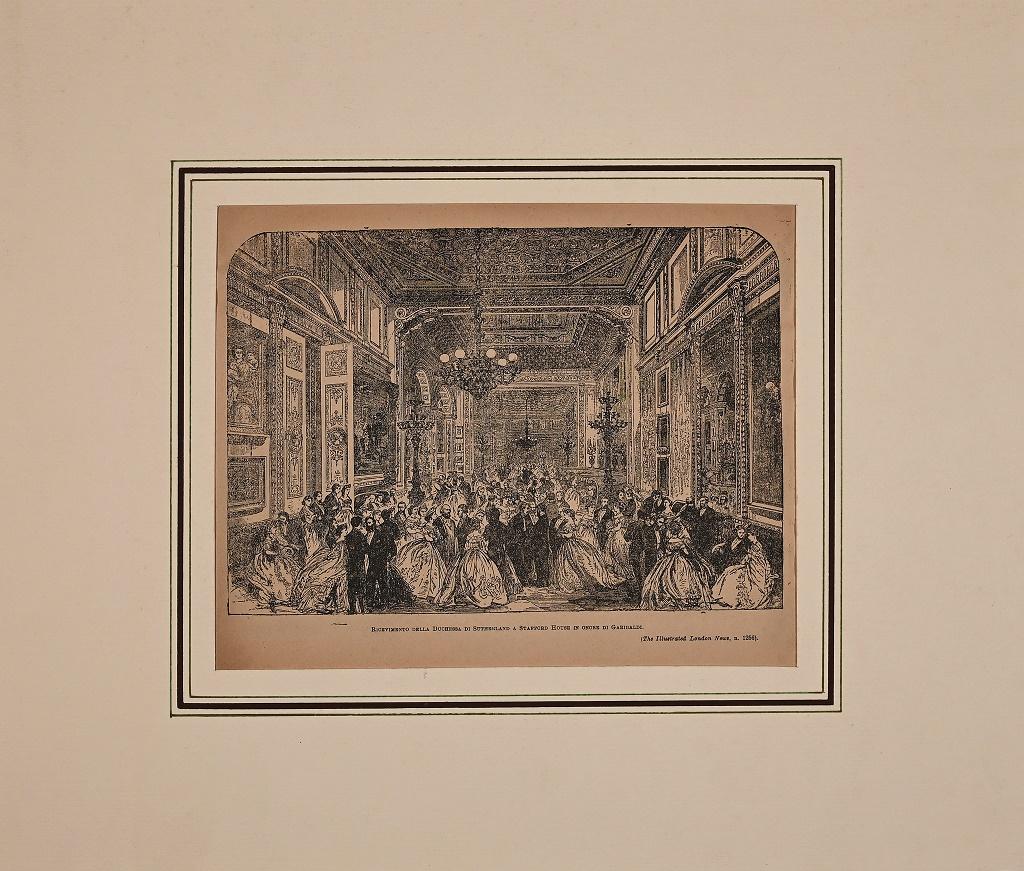Items Similar to Jacques Villon - Two Cubist Vases - Original Etching
Want more images or videos?
Request additional images or videos from the seller
1 of 13
Jacques VillonJacques Villon - Two Cubist Vases - Original Etching1946
1946
About the Item
Jacques Villon - Two Cubist Vases - Original Etching
1950
Signed in pencil
Edition of 40
Jacques Villon (1875 - 1963)
Jacques Villon was born Gaston Duchamp on July 31, 1875, in Damville, Normandy. His family is one of remarkable artistic repute; he and his three siblings Marcel Duchamp, Raymond Duchamp-Villon, and Suzanne Duchamp would all make important contributions to 20th-century art. While still a lycée student in Rouen, he began his artistic training under his grandfather, Emile Frédéric Nicolle, a shipbroker and artist. Nicolle taught Villon engraving and printmaking, and in 1891 he was the subject of one of Villon’s earliest prints. In January 1894 Villon moved in with his brother Raymond in Paris’s Montmartre neighborhood and began to study law at the University of Paris. He soon lost interest in legal studies and instead spent his time submitting drawings to various magazines and newspapers, some of which were politically oriented. Partly in order to distance his family's name from these publications, he changed his name to Jacques Villon (an homage to French medieval poet François Villon). In 1895 he began study at the Ecole des Beaux-Arts and frequented the Atelier Cormon.
For almost 10 years Villon worked largely in graphic media, contributing drawings to Parisian illustrated papers and making color prints and posters. In 1903 he helped organize the drawing section of the first Salon d’Automne, which would become one of the most significant annual exhibitions in the history of modern art. His first gallery exhibition, shared with his brother Raymond, took place at Galerie Legrip, Rouen, in 1905. He studied at the Académie Julian in Paris between 1904 and 1905, painting in a Neo-Impressionist style. In 1906 Villon settled in Puteaux and began to spend more time painting; by 1910 he had devoted himself primarily to painterly pursuits. In 1911, he and Duchamp-Villon helped found the Puteaux Group, a collective of Cubist artists that held meetings in Villon’s studio; its participants included Robert Delaunay, Marcel Duchamp, Albert Gleizes, František Kupka, Fernand Léger, Francis Picabia, and others. The following year, working with the Puteaux Group, Villon named and helped mount the Salon de la Section d'Or, a seminal exhibition in the development of the Cubist movement.
Villon exhibited nine paintings at the 1913 New York Armory Show, and his first solo exhibition in the United States was held at the Societé Anonyme, New York, in 1921; by the 1930s he was better known in the U.S. than in Europe. In 1932 he joined and began to exhibit with the Abstraction-Création group. An important presentation of his work was held in Paris in 1944 at the Galerie Louis Carré, from that time forward his exclusive representative. Villon received honors at a number of international exhibitions, including First Prize at the Carnegie International (1950) and Grand Prize for Painting at the Venice Biennale (1956). In 1955 he designed stained-glass windows for a cathedral in Metz, France, along with his contemporaries Marc Chagall and Roger Bissière. Villon died in Puteaux on June 9, 1963, at the age of 87.
- Creator:Jacques Villon (1875-1963, French)
- Creation Year:1946
- Dimensions:Height: 14.97 in (38 cm)Width: 11.03 in (28 cm)Depth: 0.04 in (1 mm)
- Medium:
- Movement & Style:
- Period:
- Condition:
- Gallery Location:Collonge Bellerive, Geneve, CH
- Reference Number:1stDibs: LU16124130452
Jacques Villon
Jacques Villon was born Gaston Duchamp in 1875. He was the oldest brother of the artists Marcel Duchamp, Suzanne Duchamp-Crotti and the sculptor Raymond Duchamp-Villon. Initially a law student, in 1894 he went to Paris to study art. It was there that he met Henri Toulouse-Lautrec and other influential artists in Paris, and changed his name to Jacques Villon, after the poet. Villon made prints of some of the most well-known belle-époque portraits and genre scenes of the early twentieth century. Around 1911, he came under the influence of Picasso and other cubists, and became a leading exponent of the style, exhibiting in the 1913 Armory Show in New York. In 1922, the Galerie Bernheim-Jeune commissioned Villon to produce a series of color aquatints after 38 major nineteenth- and twentieth-century paintings. This series included works by Pierre Auguste Renoir, Henri Matisse, Pablo Picasso, Paul Cezanne, Georges Braque, Raoul Dufy, Amadeo Modigliani, Edouard Manet, Pierre Bonnard, and others. Artists who were alive at the time of the printing collaborated with Villon, and signed the prints. The project took ten years to complete. Several of these prints are valued highly today, and some went on to be reproduced by the Louvre Museum as photo-etchings. Villon's 'cubist' etchings, with their characteristic cross-hatching, are amongst the most renowned prints of the twentieth century. Jacques Villon's long career brought him fame. The diverse nature of his paintings, from end-of-the-century portraits to cubist and abstract styles to graphic works, made him a major figure in twentieth-century art. He was made a Grand Officer of the Légion d'Honneur, and upon his death in 1963, and he was given a state funeral.
About the Seller
4.9
Gold Seller
These expertly vetted sellers are highly rated and consistently exceed customer expectations.
Established in 2015
1stDibs seller since 2015
908 sales on 1stDibs
Typical response time: 2 hours
- ShippingRetrieving quote...Ships From: Collonge Bellerive, Geneve, Switzerland
- Return PolicyA return for this item may be initiated within 7 days of delivery.
More From This SellerView All
- after Henri Laurens - Cubism - PochoirBy Georges BraqueLocated in Collonge Bellerive, Geneve, CHafter Henri Laurens - Cubism - Pochoir Published in the deluxe art review, XXe Siecle 1956 Dimensions: 32 x 24 cm Publisher: G. di San Lazzaro. Unsigned and unumbered as issuedCategory
1950s Modern Figurative Prints
MaterialsStencil
- Jean Cocteau (after) - Spanish Party - LithographBy Jean CocteauLocated in Collonge Bellerive, Geneve, CHLithograph after a drawing by Jean Cocteau Title: Spanish Party 1971 signed in the stone/printed signature Dimensions: 38 x 28 cm Lithograph made for the portfolio "Gitans et Corrida...Category
1960s Modern Interior Prints
MaterialsLithograph
- Bernard Buffet - House of Cards - Original LithographBy Bernard BuffetLocated in Collonge Bellerive, Geneve, CHBernard Buffet - House of Cards - Original Lithograph Dimensions: 32 x 24 cm Edition : 6000 Paris, Michèle Trinckvel, Draeger, 1979, Unsigned and unumb...Category
1970s Modern Interior Prints
MaterialsLithograph
- César - Original LithographBy César BaldacciniLocated in Collonge Bellerive, Geneve, CHCésar - Original Lithograph 1961 Dimensions: 32 x 24 cm From the art review XXe siècle Unsigned and unnumbered as issuedCategory
1980s Realist Abstract Prints
MaterialsLithograph
- César - Original LithographBy César BaldacciniLocated in Collonge Bellerive, Geneve, CHCésar - Original Lithograph 1963 Dimensions: 32 x 24 cm From the art review XXe siècle Unsigned and unnumbered as issuedCategory
1980s Realist Abstract Prints
MaterialsLithograph
- Leonor Fini - Untitled - Original Handsigned EtchingBy Leonor FiniLocated in Collonge Bellerive, Geneve, CHLeonor Fini - Untitled - Original Handsigned Etching Circa 1982 On colored paper Handsigned and Numbered Edition: 275 Dimensions: 69 x 52.5 cm Leonor Fini is considered one of the most important women artists of the mid-twentieth century, along with Leonora Carrington, Frida Kahlo, Meret Oppenheim, Remedios Varo, and Dorothea Tanning – most of whom Fini knew well. Her career, which spanned some six decades, included painting, graphic design, book illustration, product design (the renowned torso-shaped perfume bottle for Schiaparelli’s Shocking), and set and costume design for theatre, ballet, opera, and film. In this compellingly readable, exhaustively researched account, author Peter Webb brings Fini’s provocative art and unconventional personal life, as well as the vibrant avant-garde world in which she revolved, vividly in life. Born in Buenos Aires in 1907 (August 30 – January 18, 1996, Paris) to Italian and Argentine parents, Leonor grew up in Trieste, Italy, raised by her strong-willed, independent mother, Malvina. She was a virtually self-taught artist, learing anatomy directly from studying cadavers in the local morgue and absorbing composition and technique from the Old Masters through books and visits to museums. Fini’s fledging attempts at painting in Trieste let her to Milan, where she participated in her first group exhibition in 1929, and then to Paris in 1931. Her vivacious personality and flamboyant attire instantly garnered her a spotlight in the Parisian art world and she soon developed close relationships with the leading surrealist writers and painters, including Paul Eluard, Salvador Dali, Man Ray, and Max Ernst, who became her lover for a time. The only surrealist she could not abide because of his misogyny was André Breton. Although she repeatedly exhibited with them, she never considered herself a surrealist. The American dealer Julien Levy, very much impressed by Fini’s painting and smitten by her eccentric charms, invited her to New York in 1936, where she took part in a joint gallery exhibition with Max Ernst and met many American surrealists, including Joseph Cornell and Pavel Tchelitchew. Her work was included in MoMA’s pivotal Fantastic Art, Dada and Surrealism exhibition, along with De Chirico, Dali, Ernst, and Yves Tanguy. In 1939 in Paris she curated an exhibition of surrealist furniture for her childhood friend Leo Castelli for the opening of his first gallery. Introductions to her exhibition catalogues were written by De Chirico, Ernst, and Jean Cocteau. A predominant theme of Fini’s art is the complex relationship between the sexes, primarily the interplay between the dominant female and the passive, androgynous male. In many of her most powerful works, the female takes the form of a sphinx, often with the face of the artist. Fini was also an accomplished portraitist; among her subjects were Stanislao Lepri...Category
1980s Modern Nude Prints
MaterialsEtching
You May Also Like
- Nu couché. Intérieur à la lampe vénitienneBy Henri MatisseLocated in London, GBHenri Matisse Nu couché. Intérieur à la lampe vénitienne 1929 Etching on Chine appliqué on Arches Velin paper, Edition of 25 Paper size: 28 x 38 cms (11 x 15 ins) Plate size: 9.1 x 1...Category
1920s Modern Figurative Prints
MaterialsEtching
- Le Peseur d'Or - Original Etching by Léopold Flameng - 1873By Léopold FlamengLocated in Roma, ITLe Peseur d'Or (The Money Exchanger) is a wonderful black and white etching on wire rod cream-colored paper, realized by Léopold Flameng, an after by the Flemish artist Gabriel Metsu...Category
1870s Modern Figurative Prints
MaterialsEtching
- La Devineresse - Original Etching by J-L Vauzelle - End of 18th CenturyLocated in Roma, ITLa Devineresse is an original artwork realized by Jean-Lubin Vauzelle in the second half of the XVIII century. Original etching on paper. Passepartout included (39 x 28.5 cm). Sign...Category
Late 18th Century Modern Figurative Prints
MaterialsEtching
- Chez François Bouvin - Original Etching After François Bouvin by Charles CoutryBy Charles CoutryLocated in Roma, ITChez François Bouvin is a wonderful etching realized in 1891 by Charles Courtry, after François Bouvin. This Modern artwork representing a scene of ordinary life, is a beutiful arti...Category
1890s Modern Interior Prints
MaterialsEtching
- The Well, Carcere XIII - Etching by G.B.Piranesi - 1750sBy Giovanni Battista PiranesiLocated in Roma, ITGiovanni Battista Piranesi, The Well, Carcere XIII , from “ Images of Prisons”, Buchard , Rome, 1749-50 Etching on laid paper. Signed on plate “ Piranesi F.” lower-right. Very good ...Category
1750s Modern Interior Prints
MaterialsEtching
- Reception of the Duchess of Sutherland - Original Zincography - 1864Located in Roma, ITReception of the Duchess of Sutherland is an original zincography realized by an artist of the 19th century (1864). The artwork represent the re...Category
1860s Modern Interior Prints
MaterialsEtching, Paper
Recently Viewed
View AllMore Ways To Browse
Modern Vintage Interior Design
Retro Modern Interior Design
Interior Design Vintage Style
Vintage Style Vintage Interior Design
Retro Style Retro Interior Design
Retro Style Interior Design
Contemporary Vintage Interior Design
French Vintage Interior Design
Contemporary Retro Interior Design
Contemporary Modern Vintage Interior Design
Retro 1950s Interior Design
French Retro Interior Design
Modern French Etchings
Etching 1950
Vintage Interiors Magazine
Cubist Artist Prints
Original Etching New York
Roberts Etching






